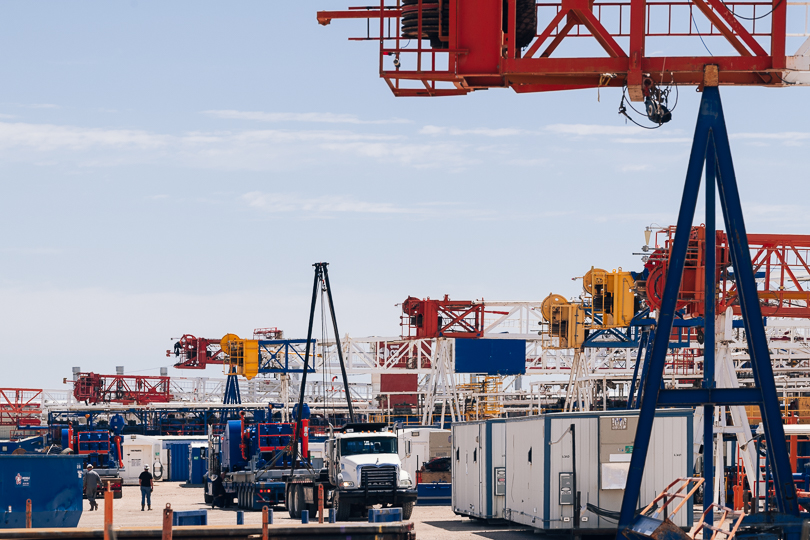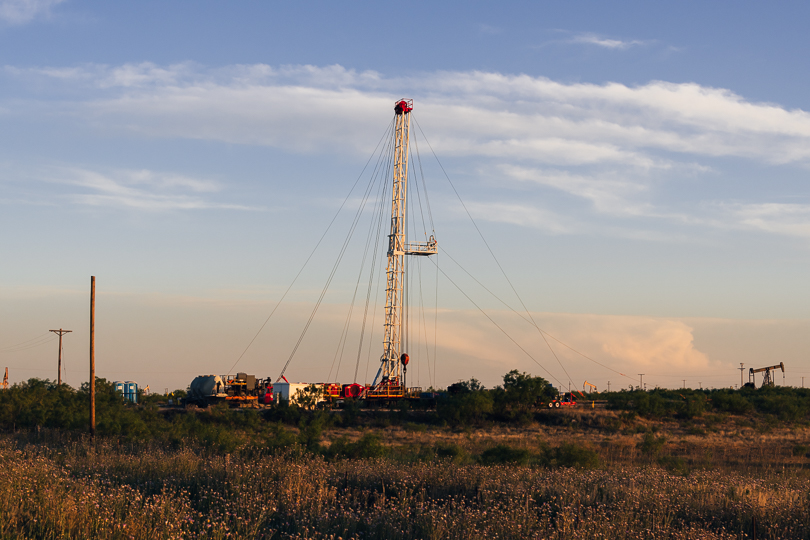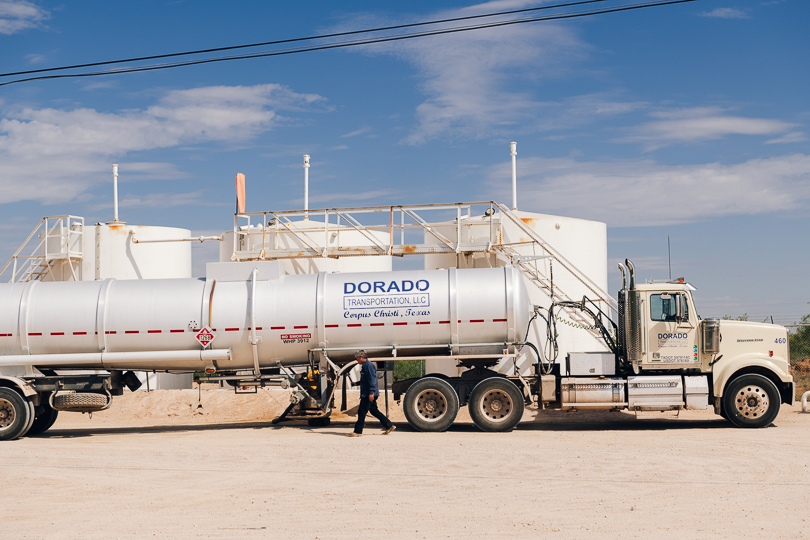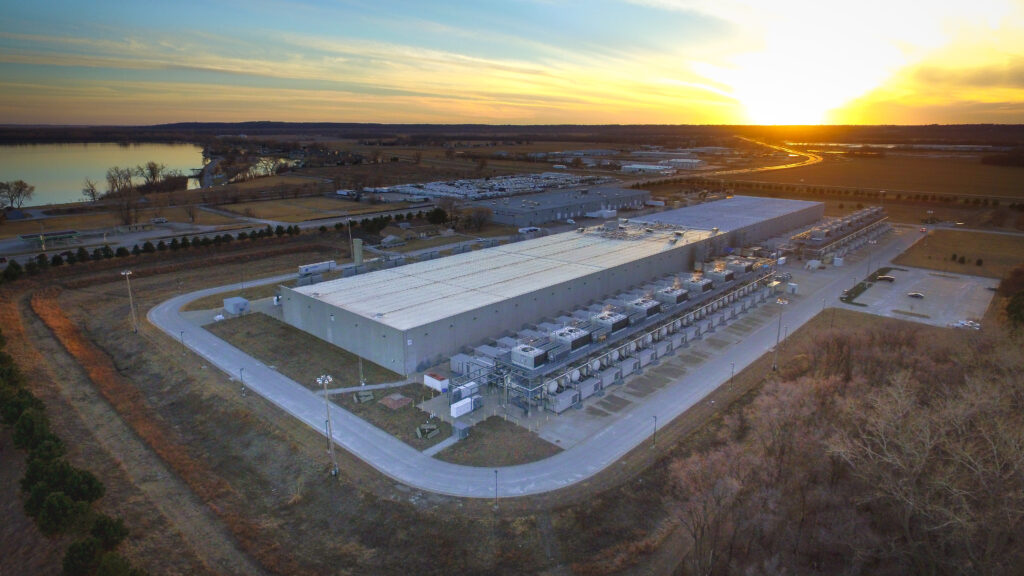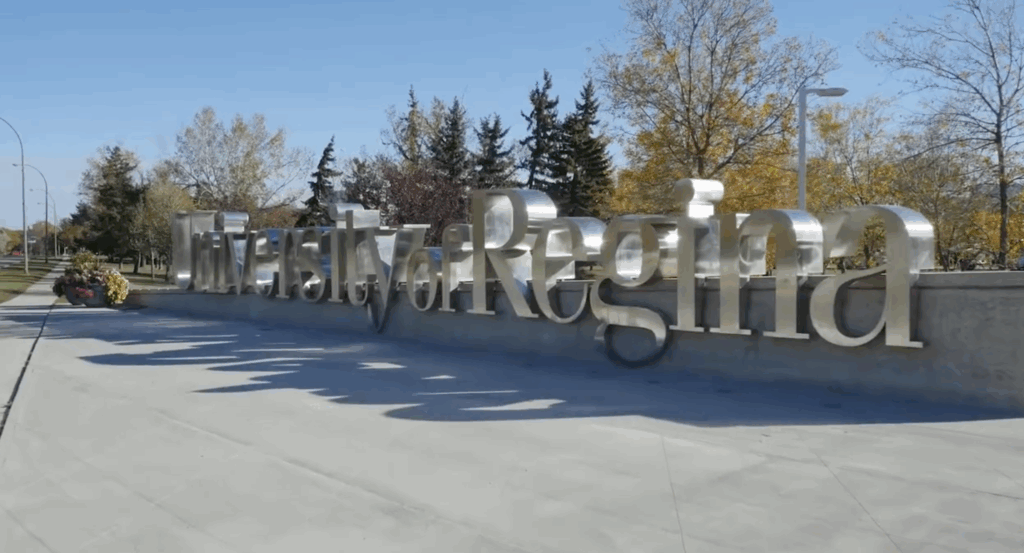Warren Buffet has a famous quote about investing: “Only when the tide goes out do you discover who’s been swimming naked.”
When it comes to his $10 billion investment in Occidental Petroleum, Buffett will need to take that one to heart now that other investors have sued Occidental for the merger financed in part by Buffet’s stake, alleging that the amount of debt required for Occidental to merge with Anadarko left the company “precariously exposed” if oil prices went lower. They cited the billions that Buffett invested in the deal as compounding this risk.
The fracking industry doesn’t care that you’re a world-famous investment sage: It destroys all capital.
Even in 2019, when Buffett was investing in Occidental, we knew that the fracking industry had been losing hundreds of billions of dollars the past decade. However, with the industry’s staggering debt load, lack of ability to continue borrowing, and drops in oil demand due to the pandemic, the tide is now truly going out to reveal the fracking industry’s failing financial performance. That receding cover has also revealed that the industry has broken one of the most basic tenets of financing for oil and gas production: reserve based lending.
Reserve based lending involves a firm estimating how much oil it has in the ground, and then assigning those reserves a value based on the most recent price of oil. A bank then lends the company money based on a percentage of this value. For lenders this has historically been a low-risk arrangement, because if a firm defaults on the loan, the bank can simply take possession of its oil field. So it has long been among the most reliable methods for smaller oil and gas companies to get financing.
But the failed financial model of the fracking industry has blown a hole in that accepted industry wisdom.
Bloomberg recently reported that Mike Lister, a JP Morgan energy banker, estimated that banks wrote off approximately $1 billion in reserve based loans for shale companies in 2019, exceeding their total losses for the past 30 years, and that trend is expected to continue.
Cool. A national oil and gas credit facility, so rolling loans can gather no loss, and banks can keep dining on the transaction fees. How much is at stake?
We know there’s this $200 billion owed in reserve-backed lending… via @Reuters… all upstream (exploration & production) pic.twitter.com/EdwoD2V3Ey
— Hugh MacMillan (@hughrmacmillan) April 24, 2020
Is it possible that the shale industry intentionally overstated its reserves in order to borrow more money and entice investors? It seems likely, as there is strong evidence that the industry knew its valuation methods over-predicted well volumes and reserves, but used them anyway to secure financing.
Speaking to The Wall Street Journal late last year, Stephen Steinmour, CEO of Ohio-based regional bank Huntington Bancshares, took a more charitable view of what occurred while identifying the core issue: “Geology and the assumptions were just flawed.”
As we have documented in DeSmog, there have been many flawed assumptions about how much oil is in the shale (geology), and assumptions about well production have obvious flaws.
In a January 2019 interview with Seeking Alpha, oil industry geological consultant Art Berman discussed ways that shale companies were manipulating data to overestimate potential future oil production. His conclusion is a good summary of the finances of the shale industry: “…it’s misleading at best and it’s probably borderline fraud at worst, but whatever it is, it isn’t honest.”
Borderline fraud is probably the best description available for the finances of the fracking industry. How else can you lose a quarter of a trillion dollars while promising investors big profits?
The Fracker’s Eternal Optimism
The same month that Art Berman gave that interview, The Wall Street Journal ran an article titled, “Fracking’s Secret Problem — Oil Wells Aren’t Producing as Much as Forecast.”
The WSJ article that followed quoted Texas A&M petroleum engineering professor John Lee, an expert on calculating oil and gas reserves. “There are a number of practices that are almost inevitably going to lead to overestimates,” Lee told The Journal.
Two recent research papers highlight some of the practices that the industry has used to consistently overestimate reserves and well production.
“Assessment of the Reliability of Reserves Estimates of Public Companies in the U.S. and Canada,” a paper Lee and colleagues prepared for the Unconventional Resources Technology Conference in July 2019, reviews reserve estimates for Canadian and U.S. oil and gas companies from 2007 to 2017, and then looks at historical revisions to those estimates as the companies produced the oil from those reserves.
Unsurprisingly, Lee and his colleagues found that U.S. shale oil companies “overestimated 1P reserves significantly.” “1P reserves” are the reserves that back reserve based lending.
The authors’ conclusions do not characterize an industry making predictions based on hard data. “We can conclude that U.S. filers are overconfident,” they state. “With biases somewhere between extreme overconfidence combined with negligible directional bias [and] moderate overconfidence combined with extreme optimism.”
So according to the data used in this research, U.S. shale companies consistently overestimated reserves. How could that be possible for an industry with all the best engineers and well over a hundred years of experience estimating reserves if it wasn’t intentional? Flawed models.
A drill rig in the setting sun. Ector County, Texas. May 28, 2020. Credit: © Justin Hamel 2020
The industry uses models to estimate the volumes of oil that future wells might produce, then combines those figures to estimate total potential oil reserves. But according to a paper on estimating petroleum reserves, published by the Society of Petroleum Engineers in 2018, these models are flawed.
“Using Data Analytics to Assess the Impact of Technology Change on Production Forecasting“ addresses the issues around the models being used to predict future oil volumes.
One of the authors’ main conclusions is that the models used to forecast oil well volumes do not take into account many of the recent advancements in extraction technologies that the industry likes to tout, but that have led to faster well decline rates and lower total production. One of the important factors they do not account for is tighter well spacing, which leads to well interference (aka frac hits or child wells). The industry had hoped that putting wells closer together would result in more oil production but the reality is that the wells interfere with each other if they are too close to each other, and thus the wells produce less oil than was predicted.
“For example, in the Bakken [a shale play spanning parts of Montana, North Dakota, and Canada], the terminal decline rate increases by upwards of 10 percentage points for wells with modern completions in multi-well pads,” the authors state. “Since production life is dependent upon terminal decline rates, spacing and completions effects must be accounted for in type curves for wells in multi-well pads.”
Flawed models give flawed results, but results that make the fracking industry look better to bankers and investors. So the industry continues to use them to conveniently predict there is more oil in the ground than is actually there.
One of the paper’s major findings is that shale operators are using decline rates of 5-8 percent a year. These were accurate for conventionally drilled vertical oil wells, but are far too low for horizontal fracked wells. The researchers found in those cases that decline rates could be above 15 percent, which significantly affects how much oil the well will produce over its lifetime — and thus the reserves estimates based on the lower decline rates are significantly higher than what the well will actually produce.
Oil offload at the Midland Tank Farm. Midland, Texas. May 28, 2020. Credit: © Justin Hamel 2020
“Terminal decline rates have a direct effect on reserves reporting and ultimate profitability of unconventional wells,” the paper concludes, “but have not been deeply studied in the literature.”
So if wells are declining at rates two to three times higher than the industry is estimating, it isn’t hard to see why the industry consistently overestimates its well production forecasts: Their models are not based on what is actually happening in the shale plays producing oil.
David DiCarlo, an associate professor on the petroleum engineering faculty of the University of Texas at Austin, summed up the problem for DeSmog.
“The models being used for unconventional wells are based on results from conventional reservoirs,” he said. “They do not take into account the impacts of variables like increased well interference due to tighter well spacing” leading to overestimating oil reserves by an average of 30 percent when compared to models that do.
The problems with these models are no secret within the industry. But they continue to provide the baselines for fracking industry financing.
Schlumberger chief warns US shale oil production will drop as observed well-decline rates rise. https://t.co/460PEu1L4z What the article doesn’t address is how the frackers are going to service their mountainous debts if they can’t hold production up. https://t.co/KlH7vsJlSk
— Jeremy Leggett (@JeremyLeggett) October 20, 2018
Investor Economics and ‘Corporate Math’ for Reserves Estimates
Bethany McLean, a journalist and contributing editor for Vanity Fair magazine, is the author of Saudi America, a book that explores the ponzi scheme-like nature of the economics of U.S. shale oil production. In a February interview with the Texas Monthly podcast, McLean discussed the idea of “corporate math or investor economics” to describe, for example, how fracking companies tell investors they can break even at $25 per barrel, when the reality is that at that price or similar, they are losing large sums of money.
In Saudi America McLean documented how this practice of “corporate math” has been used with reserves estimates, by comparing the estimates fracking companies made for the Securities and Exchange Commission (SEC) with what they told investors. The results are remarkable, especially when we know that the data show that in many cases even the estimates given to the SEC were overly optimistic.
“One investor analyzed 73 shale drillers in 2014, and found that almost all of them reported higher oil and gas prospects to investors than they did to the SEC,” McLean wrote. “For instance, Chesapeake [Energy Corporation] reported 2.7 billion in ‘barrel of oil equivalent’ —a measure that equates natural gas with oil — to the SEC, but 13.4 billion to investors. Pioneer reported 845 million to the SEC and 11 billion to investors. In total, the industry reported 33 billion of barrels of oil equivalent to the SEC and 163.5 to investors.”
How likely is it that the forecasts given to investors were accurate? Those are not rounding errors.
Chesapeake has since declared bankruptcy. But that didn’t stop the company from recently giving its senior managers another round of bonuses, saying the payouts would help them remain “motivated.”
Misleading investors has paid very well for fracking company executives.
Read this: Why U.S. energy CEOs will get big payouts despite oil meltdownhttps://t.co/QTt5znpmp0 via @MacMutual @davidj_french
— Collin Eaton (@CollinEatonHC) May 27, 2020
Plausible Deniability and Independent Audits
A main cause of the 2007-2010 financial crisis was that supposedly independent ratings agencies rubber-stamped near-worthless mortgage-backed securities with investment grade ratings.
When it comes to the reserve estimates that fracking companies provide to the SEC, there is also a supposedly independent review process: Qualified petroleum engineering firms audit the reserve estimates used for reserve based lending. However, based on the huge spike in write-offs on reserve based loans in 2019, this could become the industry’s own version of the sub-prime mortgage rating debacle.
DeSmog has covered the brief history of the fracking company Alta Mesa. The company promised “world class assets” to investors but the reality was that the oil simply wasn’t there. The company quickly went bankrupt. Multiple investors have sued, alleging that Alta Mesa’s management and financial backers made “misleading” financial statements, and the firm now faces an SEC investigation.
It may be hard for Alta Mesa to claim ignorance in these proceedings, as it was run by a fracking industry veteran and backed by financial industry heavyweight Riverstone. If anyone knows the reality of the shale industry, it should be a team like this.
In the proxy statement for the formation of the company, an audit by Houston-based petroleum consultancy Ryder Scott found no problems with Alta Mesa’s reserves estimates of its supposedly world class assets. The firm’s “overall procedures and methodologies [used] in preparing their estimates of the proved reserves” complied with SEC regulations, Ryder Scott concluded, and were, “in the aggregate, reasonable within the established audit tolerance guidelines of 10 percent as set forth in the SPE auditing standards.”
But a closer look reveals just how little oversight such audits actually provide. Ryder Scott used Alta Mesa data, and “reviewed such factual data for its reasonableness,” but admitted that it did not conduct “an independent verification of the data furnished by Alta Mesa.”
This is how firms arrange plausible deniability: An independent auditor simply agrees with everything the company says.
Alta Mesa ended up in what is known as a “free fall” bankruptcy, which is as bad as it sounds. What was one of the main issues? Reserve based lending.
The venture seeking to buy Alta Mesa out of bankruptcy has offered $220 million after failing to close on a previous sale https://t.co/DyQjPKKRLp
— WSJ Pro Bankruptcy (@WSJBankruptcy) April 3, 2020
The bank determined that the reserves were worth far less than what Alta Mesa had claimed and ultimately cut their value by almost 50 percent. That this occurred in August of 2019, when the price of West Texas crude was averaging just under $58 a barrel, shows that low oil prices were not the problem.
“Historically, lending to the oil and gas industry on a secured basis has been one of the most safe places for commercial banks to make loans,” Buddy Clark, a partner at industry law firm Haynes and Boone, explained to the Houston Business Journal in January.
The New York Times recently reported that energy consultant Rystad Energy expects as many as 250 oil and gas firms to declare bankruptcy by the end of 2021. With this historic industry crash, the days of banks considering reserve based lending as nearly risk-free are likely a thing of the past.
Industry Leader Lobbies for Looser Reserves Estimates Regulations
One consistent trait of the fracking industry is that the CEOs will always double down on misleading investors, because as long as the company exists, CEOs keep getting bonuses no matter how much money they lose for investors.
A first bankruptcy is just an opportunity to get more investors to fund a second bankruptcy with more executive bonuses. An industry bailout is just another opportunity to pay executive bonuses. Every year is another year to predict that this will finally be the year fracking makes money. Every year they are wrong.
And lobbying for bailouts, deregulation, and looser accounting standards are all par for the course.
Harold Hamm, the chairman of fracking giant Continental Resources, was a fixture in Washington, D.C. even before his close friend Donald Trump became president. In 2015 Hamm testified to Congress in support of efforts to lift the oil export ban. Among Hamm’s arguments in favor of lifting the 40-year-old measure, Hamm categorically ruled out the possibility of U.S. crude oil being exported to rival nation China, a claim that made little sense at the time, and proved false within a year of the ban’s 2016 demise.
Despite his relentless optimism about the fracking industry, Hamm’s company has fared very poorly, and he has used his connection to Trump to lobby for various bailouts and favors.
Last year Hamm wrote a letter to the SEC advocating that oil companies be allowed to double how long they can count potential future production as proved reserves, from 5 to 10 years. At a time when it is clear that the reserves estimates from the industry are overly optimistic, Hamm is asking for even looser regulations that could allow companies like his to borrow more money using these inflated reserve estimates.
This is how the fracking industry has maintained its access to financing: It keeps changing the rules, misleading investors, and making new promises, and the executives continue to collect exorbitant pay.
And it’s worked in part thanks to those flawed models that, as the industry knew, overpredicted oil well production and reserves — until the tide went out and we all could see that there just wasn’t as much oil in the shale as the industry predicted.
It’s now clear that the “corporate math” used to justify the financing of the fracking industry just simply does not add up. In the case of just one failing firm named Templar Energy, the Wall Street Journal recently reported that once the assets that it used to secure financing are liquidated, the banks are expected to receive $0.21 back for each of the dollars they loaned.
It’s a far cry from 2015, when the banks loaning money to Templar, along with Templar CEO David D. Le Norman, were all very confident about the value of those assets.
Senior lenders to bankrupt oil-and-gas company Templar Energy are expected to receive a fraction of the roughly $400 million they are owed https://t.co/G9O5KZLnHf
— WSJ Pro Bankruptcy (@WSJBankruptcy) June 1, 2020
“Our lender group has recognized our high quality asset base, significant reserve growth, and disciplined approach to the development of the assets. We appreciate the continued support,” Le Norman stated in a press release.
But that “high quality asset base” was valued using models that predicted future well production and oil reserves that the industry already knew were flawed and overly optimistic, but continue to use to this day. The oil and gas industry has sold the fracking boom as a “miracle.” But the real miracle is how long the industry was able to fool investors into believing it would ever be profitable.
Main image: May 27, 2020, dozens of drilling rigs are stacked at the Patterson-UTI yard in Midland, Texas, after the oil price went negative on April 20, 2020. Credit: © Justin Hamel 2020
Subscribe to our newsletter
Stay up to date with DeSmog news and alerts


